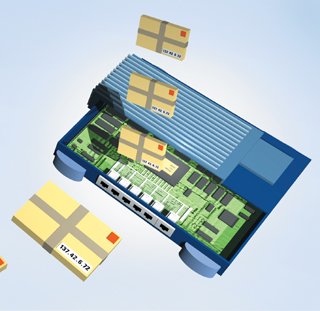Chapter 3. How TCPIP Works
Chapter 3. How TCP/IP Works A seemingly simple set of ideas makes it possible for computers and networks all over the world to share information and messages on the Internet: Break up every piece of information and message into pieces called packets, deliver those packets to the proper destinations, and then reassemble the packets into their original form after they've been delivered so the receiving computer can view and use them. That's the job of the two most important communications protocols on the Internetthe Transmission Control Protocol (TCP) and the Internet Protocol (IP). They are frequently referred to as TCP/IP. TCP breaks down and reassembles the packets, whereas IP is responsible for ensuring the packets are sent to the right destination. TCP/IP is used because the Internet is what is known as a packet-switched network. In a packet-switched network, there is no single, unbroken connection between sender and receiver. Instead, when information is sent, it is broken into small packets, sent over many different routes at the same time, and then reassembled at the receiving end. By contrast, the telephone system is a circuit-switched network. In a circuit-switched network, after a connection is made (as with a telephone call, for example), that part of the network is dedicated only to that single connection. For personal computers to take full advantage of the Internet, they need to use special software that understands and interprets the Internet's TCP/IP protocols. This software is referred to as a socket or a TCP/IP stack, and it is built in to any computer that you buy, so you don't need to do anything special to access it. For PCs, the software is called Winsock. For Macintoshes, the software is called MacTCP. In both cases, this software serves as an intermediary between the Internet and the personal computer. There are two primary ways that a computer can connect to the Internet and then use TCP/IP protocolsthrough a direct connection via a local area network (LAN), cable modem, or DSL line; or by dialing in using a modem. To connect via LAN, cable modem, or DSL line, a computer needs a network card. To communicate with the network and the Internet's TCP/IP protocols, the network card requires a hardware driversoftware that mediates between the network and the network card. When the computer instead dials in to the Internet using a modem, the computer must use one of two software protocols: either Serial Line Internet Protocol (SLIP) or Point-to-Point Protocol (PPP). These protocols do the job of communicating with the Internet's TCP/IP protocols. |
EAN: 2147483647
Pages: 223
